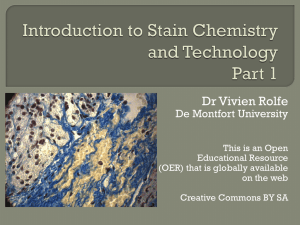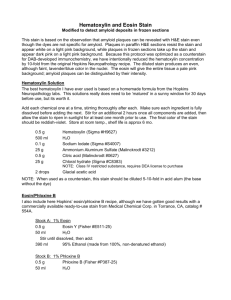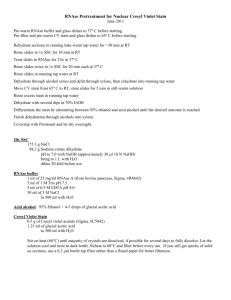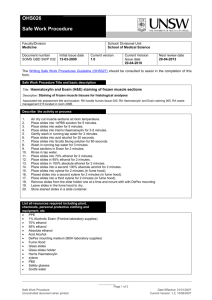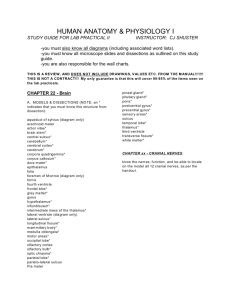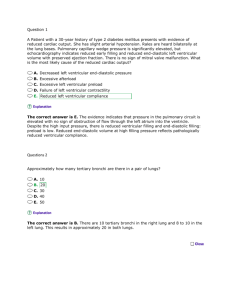Purkinje cells
advertisement
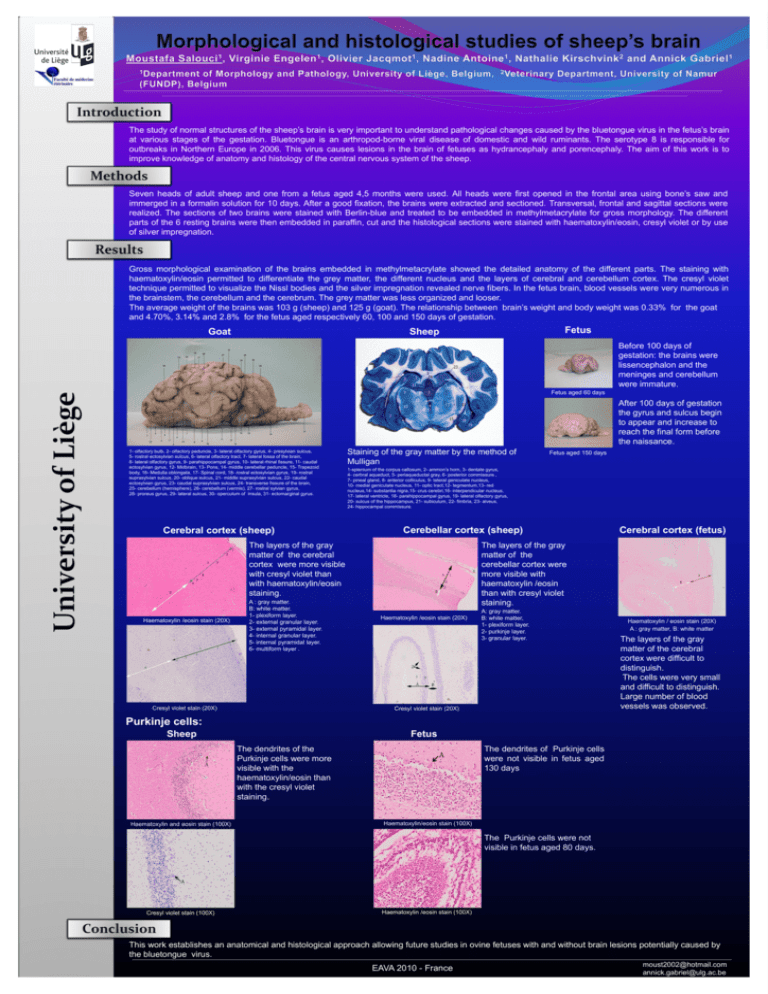
The study of normal structures of the sheep’s brain is very important to understand pathological changes caused by the bluetongue virus in the fetus’s brain at various stages of the gestation. Bluetongue is an arthropod-borne viral disease of domestic and wild ruminants. The serotype 8 is responsible for outbreaks in Northern Europe in 2006. This virus causes lesions in the brain of fetuses as hydrancephaly and porencephaly. The aim of this work is to improve knowledge of anatomy and histology of the central nervous system of the sheep. Seven heads of adult sheep and one from a fetus aged 4,5 months were used. All heads were first opened in the frontal area using bone’s saw and immerged in a formalin solution for 10 days. After a good fixation, the brains were extracted and sectioned. Transversal, frontal and sagittal sections were realized. The sections of two brains were stained with Berlin-blue and treated to be embedded in methylmetacrylate for gross morphology. The different parts of the 6 resting brains were then embedded in paraffin, cut and the histological sections were stained with haematoxylin/eosin, cresyl violet or by use of silver impregnation. Gross morphological examination of the brains embedded in methylmetacrylate showed the detailed anatomy of the different parts. The staining with haematoxylin/eosin permitted to differentiate the grey matter, the different nucleus and the layers of cerebral and cerebellum cortex. The cresyl violet technique permitted to visualize the Nissl bodies and the silver impregnation revealed nerve fibers. In the fetus brain, blood vessels were very numerous in the brainstem, the cerebellum and the cerebrum. The grey matter was less organized and looser. The average weight of the brains was 103 g (sheep) and 125 g (goat). The relationship between brain’s weight and body weight was 0.33% for the goat and 4.70%, 3.14% and 2.8% for the fetus aged respectively 60, 100 and 150 days of gestation. Goat Fetus Sheep Before 100 days of gestation: the brains were lissencephalon and the meninges and cerebellum were immature. Fetus aged 60 days After 100 days of gestation the gyrus and sulcus begin to appear and increase to reach the final form before the naissance. 1- olfactory bulb, 2- olfactory peduncle, 3- lateral olfactory gyrus, 4- presylvian sulcus, 5- rostral ectosylvian sulcus, 6- lateral olfactory tract, 7- lateral fossa of the brain, 8- lateral olfactory gyrus, 9- parahippocampal gyrus, 10- lateral rhinal fissure, 11- caudal ectosylvian gyrus, 12- Midbrain, 13- Pons, 14- middle cerebellar peduncle, 15- Trapezoid body, 16- Medulla oblongata, 17- Spinal cord, 18- rostral ectosylvian gyrus, 19- rostral suprasylvian sulcus, 20- oblique sulcus, 21- middle suprasylvian sulcus, 22- caudal ectosylvian gyrus, 23- caudal suprasylvian sulcus, 24- transverse fissure of the brain, 25- cerebellum (hemisphere), 26- cerebellum (vermis), 27- rostral sylvian gyrus, 28- proreus gyrus, 29- lateral sulcus, 30- operculum of insula, 31- ectomarginal gyrus. Cerebral cortex (sheep) Staining of the gray matter by the method of Mulligan 1-splenium of the corpus callosum, 2- ammon’s horn, 3- dentate gyrus, 4- cerbral aqueduct, 5- periaqueductal gray, 6- posterior commissure , 7- pineal gland, 8- anterior colliculus, 9- lateral geniculate nucleus, 10- medial geniculate nucleus, 11- optic tract,12- tegmentum,13- red nucleus,14- substantia nigra,15- crus cerebri,16- interpendicular nucleus, 17- lateral ventricle, 18- parahippocampal gyrus, 19- lateral olfactory gyrus, 20- sulcus of the hippocampus, 21- subiculum, 22- fimbria, 23- alveus, 24- hippocampal commissure. Cerebellar cortex (sheep) The layers of the gray matter of the cerebral cortex were more visible with cresyl violet than with haematoxylin/eosin staining. Haematoxylin /eosin stain (20X) A : gray matter. B: white matter. 1- plexiform layer. 2- external granular layer. 3- external pyramidal layer. 4- internal granular layer. 5- internal pyramidal layer. 6- multiform layer . Cresyl violet stain (20X) Fetus aged 150 days Cerebral cortex (fetus) The layers of the gray matter of the cerebellar cortex were more visible with haematoxylin /eosin than with cresyl violet staining. Haematoxylin /eosin stain (20X) A: gray matter. B: white matter, 1- plexiform layer. 2- purkinje layer. 3- granular layer. Cresyl violet stain (20X) Haematoxylin / eosin stain (20X) A : gray matter, B: white matter The layers of the gray matter of the cerebral cortex were difficult to distinguish. The cells were very small and difficult to distinguish. Large number of blood vessels was observed. Purkinje cells: Sheep Fetus The dendrites of the Purkinje cells were more visible with the haematoxylin/eosin than with the cresyl violet staining. Haematoxylin and eosin stain (100X) The dendrites of Purkinje cells were not visible in fetus aged 130 days Haematoxylin/eosin stain (100X) The Purkinje cells were not visible in fetus aged 80 days. Cresyl violet stain (100X) Haematoxylin /eosin stain (100X) This work establishes an anatomical and histological approach allowing future studies in ovine fetuses with and without brain lesions potentially caused by the bluetongue virus. EAVA 2010 - France moust2002@hotmail.com annick.gabriel@ulg.ac.be
